Description
This resource provides a clear framework to explore the full range of issues arising from sexual violence, including identity, goal-setting, safety, mental and physical well-being, managing emotions, friendships, relationships and disclosure, memory, concentration and sensory experiences. It includes printable resource sheets and details of available supports to introduce to individuals or groups. Whilst targeting neurodivergent/autistic women survivors, it can be adapted by others to suit their requirements. Above all, it encourages practitioners to work respectfully with clients in the context of their experiences and evolving situations.
The level of sexual violence in our society remains at shockingly high levels. Every survivor’s story is unique, but neurodivergent persons often carry extra, unwanted baggage with them as they try to achieve recovery. This includes trained compliance, low self-esteem, and the impact of societal choices that isolate and marginalise neurodiverse children and adults through institutionalisation, impoverishment, lack of care, and enforced lack of choice over such important topics as who touches them, who they live with, where they live and what they do. Support workers need to understand how these factors impact recovery. They also need to understand and adapt to communication preferences and sensory needs.
Audience
Professionals and services involved in supporting autistic women and in working with victims and survivors of rape and sexual abuse, including women’s aid centres, rape crisis centres, domestic abuse services, specialist rape and domestic advice counsellors, advocates, and practitioners in mental health and trauma services, social workers, psychologists, psychotherapists and coaches, faculty in higher education.
Details
ISBN: 9781 913414979
Publication: December 2020
Brief Table of Contents
Foreword by Dr Mitzi Waltz, Autism consultant, trainer, author and researcher in autism, disability and inclusion
Chapter 1: Rebuilding Our Life
Chapter 2: Let’s Talk About Safety
Chapter 3: Looking After Your Mental Wellbeing
Chapter 4: Looking After Your Physical Wellbeing
Chapter 5: Managing Your Emotions
Chapter 6: Friendships, Relationships and Disclosure
Chapter 7: Memory, Concentration and Sensory Experiences
Author
Dr Susy Ridout is an author, mentor, associate lecturer and independent researcher working in the field of autism, neurodiversity and sexual violence. As a neurodivergent victim-survivor of sexual violence, she has combined this insider experience with the knowledge and skills she has developed over a decade of mentoring in HE institutions to produce the material presented in this book.
Her doctoral study at University of Birmingham (2016) focused on ways to bring the autistic voice to the fore in research, services and resources impacting on them, and Susy has turned this to her advantage to make sense of her experience of rape. This has resulted in presentations at conferences in the UK (University of Birmingham, 2018) and abroad (Mexico, 2019), where she has voiced her experiences so that practitioners and all those working to support victim-survivors are clear as to our agenda and the dangers of imposing their own.
Susy continues authoring and mentoring and has added to this work portfolio that of Associate Lecturer at Oxford Brookes University (neurodiversity) and bespoke training around the country. These are informed by her main fields of interest, which are neurodivergence, disability, intersectionality and sexual violence.


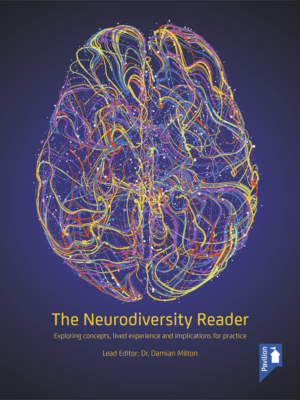
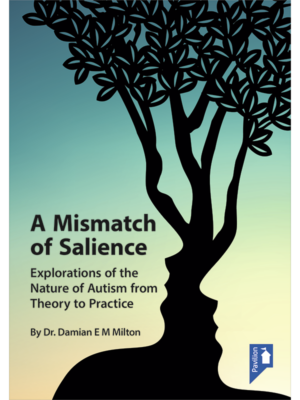
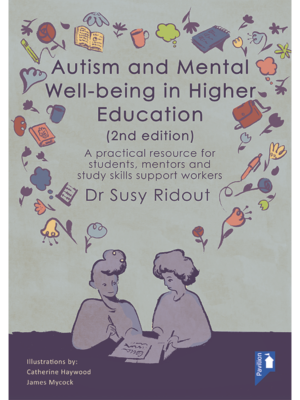

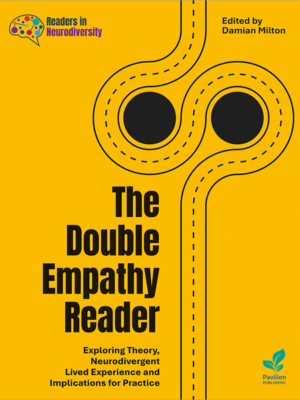
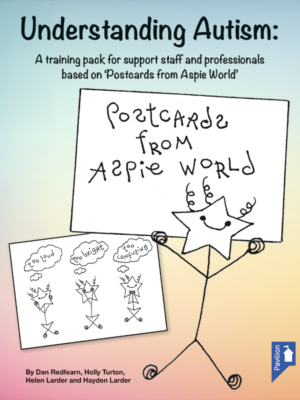
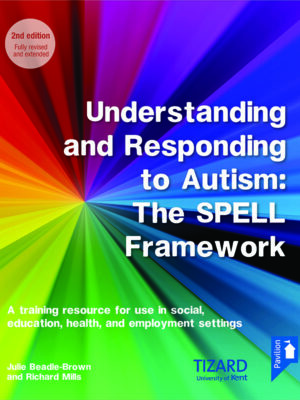
Shona Murphy –
Neurodivergent people are at an increased risk of experiencing sexual violence than the general population (Brown, Peña and Rankin, 2017; Edelson, 2010) yet as far as I am aware this is the first book that provides a toolkit for practitioners who support this specific group of people. Accessing support of any kind can be difficult as a neurodivergent person, as often service providers do not have enough knowledge about neurodiversity and even where they do the limited flexibility in the system may impede their ability to adapt services when necessary. For some autistic people, a requirement such as a phone call to book an appointment can make support inaccessible. It is therefore refreshing to read a book that has been written by a neurodivergent author with extensive experience of mentoring neurodivergent people as understanding and flexibility is evident throughout.
In keeping with the accessibility theme, the book itself is very easy to read. It is split into short readable chapters, has a clear structure and beautiful illustrations by Catherine Hayward help to break up text for those of us who have difficulty with reading. An audio version and an e-book version would be a welcome addition in the future. The book also incorporates a useful appendix of resources.
There are seven practical chapters that provide a selection of activities that can be chosen and altered to suit the individual who is being supported. The chapters are:
1. Rebuilding your life: This covers supporting your neurodivergent client to set their own goals and add some structure back into their life. Executive dysfunction can be a problem for many neurodivergent people (Craig et al., 2016; Demetriou et al., 2018) so the week planning activity is one that could be useful in a number of contexts not just for victim-survivors of sexual violence.
2. Let’s talk about safety: Many suggestions in this chapter concentrate on identifying environments where you feel safe and happy and helping the victim-survivor to brighten their home environment and pamper themselves. As Dr. Ridout acknowledges it is not just about the environment, it is also about the creative process ‘which taps into our happy chemicals’ (p. 28)
3. Looking after your mental well-being: Activities in this chapter include supporting sleep, paying attention to talk (as language can influence how one feels) and managing the bad days.
4. Looking after your physical well-being: The main focus of this chapter is diet and exercise and the appendix includes lists of ideas for recipes and easy but nutritious meals.
5. Managing your emotions: Neurodivergent people sometimes have difficulty recognising and identifying emotions so this chapter includes strategies for increasing self awareness and identifying the feelings that occur before a strong emotion which may then enable the emotion to be expressed in a different way. This chapter is useful for identifying one’s personal triggers and developing coping strategies.
6. Friendships, relationships and disclosure: Trauma from sexual violence can be exacerbated by the responses of friends and family. Tackled here is the additional trauma that can occur when friendships are lost or change and some of the reasons why this can happen. Social relationships can be difficult for some neurodivergent people even prior to trauma from sexual violence.
7. Memory, concentration and sensory experiences: Trauma can affect cognitive ability such as memory and concentration, so this chapter provides tips and strategies such as fidget toys, grounding walks and breathing exercises.
Each chapter ends with the ‘points for reflection’ section which helps put the chapter into the context of neurodiversity which is an extremely useful addition particularly where the practitioner is not neurodivergent and may not have had similar lived experience. For example, tips such as using the victim-survivors preferred form of communication and reminders of how many neurodivergent people may have had negative experiences with practitioners and systems who have viewed them through a medical model lens.
Conclusion
A practitioner can take years to build up a comprehensive toolkit but Dr. Ridout’s book delivers a head start. It also has the advantage of giving an insider perspective for those who do not have the benefit of lived experience.
Although this book is aimed at neurodivergent survivors of sexual violence, the activities would be useful for anyone who has experienced trauma. The goal of providing a resource that will suit neurodivergent people simply means it caters to the diversity of sensory and cognitive processing and life experiences that occur amongst humans. The level of consideration that the author has put into inclusion does nothing to impinge its value as a tool for those who do not identify as neurodivergent. The activities are suitable for anyone who has experienced trauma, many of them are not specific to sexual violence. Consequently, I would recommend this book to anyone who is supporting survivors of trauma.
Dona Smith –
As a practitioner, I am an Art Psychotherapist, I have been working with Survivors of sexual violence in various settings for 10 years. I have some knowledge and understanding of Autism and Neurodiversity, but to find a resource that could support me directly with those who had experienced sexual violence and experienced the world as neurodiverse and autistic is unusual. Therefore I was interested to try this book out.I decided after reading to use it in my work.
I currently work with young people 12 -24 who have experienced sexual violence. I also decided to use it with those currently on my case as I wanted to explore its use as a tool for ‘everyone’. Not all autistic young people have a diagnosis (?) and some young people I have worked with may not even be aware of their own neurodiversity, and I wanted to see how it worked overall. This book can be used as a whole or in parts and to work with the survivor, or the survivor to use themselves. Taking a person-centred approach, valuing the survivor and working at their pace is an important aspect of this book and is already an established approach that I use.
I found the safety aspect and the experience of neurodivergent survivors in relation to trauma really important and useful to explore. Understanding safety within sessions and how that relates to the environment and experience of the survivor is explored in a way that establishes the relationship to not only self but to others, in a clear way. I may have put this first in the book however, it is personal choice which directs this book which I liked. There is no ‘should’ do this . Each chapter stands alone. Susy understands the importance of language and the use of words for those with autism in particular, and each part is clear as the survivor is led through each activity.
I used various activities as I felt they became appropriate in the work. I already encourage those I work with to build their own toolkit for their ‘Recovery journey’ and as a ‘Safety toolkit’ a place to find the resources for ‘coping’ and ‘distraction’. I found the structure and information about what is important and what is useful, and the difference between the two enabled me to think about the needs of a survivor whether neurodivergent or not. Safety and an understanding of the impact of trauma runs through each section.
Some activities in the book appealed to some young people more than others. We spent time working out what was helpful for that moment. I found the book a useful tool and aid to support. Each section stands alone or can be used combined. And it was good to have a selection covering a number of aspects separately for example I used some of the self-care activities, both the mental and physical well being and combined some : for example managing the day in steps and planning a meal in steps. The young people I supported were able to discuss and reflect on each activity and make adjustment for their own needs. The sessions had themes and a structure which one young person noted helped with remembering.
Those that used it were able to adapt and use their own creativity to add their own spin on things. This develops confidence and helps with recovery. I was able to use the book both verbally- explaining tasks and activities via phone, and virtually. Breaking down activities and reflection was the most useful for the work I was doing with survivors. We may have only looked at one exercise but we were able to explore this in depth, leading to new aspects to consider. For example ‘Identity’ and ‘language and how we speak’ and ‘boundaries’. I am time limited in my support sessions, so it was useful to have a plan and a focus. The pace and use of the book can be tailored with the individual. Sections connect in a way that allows a flow and continuity. The book also allows the practitioner a voice and to develop their understanding of difference.
The importance of reflection after each activity was crucial and the ‘points for reflection’ I found really helpful in supporting me to think about the survivor and reflect the following session to see how the work was progressing or not. To continually check in with the survivor and have the structure to follow improved communication and relationship.
I think this book is a valuable resource for individuals working in counselling, therapy or any support role to help those who have experienced sexual violence. It importantly gives a practical approach that is accessible and useful for practitioners supporting neurodivergent and autistic people. It is also a valuable resource for Autistic survivors of sexual violence to use themselves. I think it would be really useful to those new to this area of therapeutic support. It has clear essential information and guidance and is a good resource tool.
Sonny Hallett, an autistic trainer, advocate, and trainee counsellor based in Edinburgh, Scotland –
Review on the Thinking Person’s Guide to Autism by Sonny Hallett an autistic trainer, advocate, and trainee counsellor based in Edinburgh, Scotland